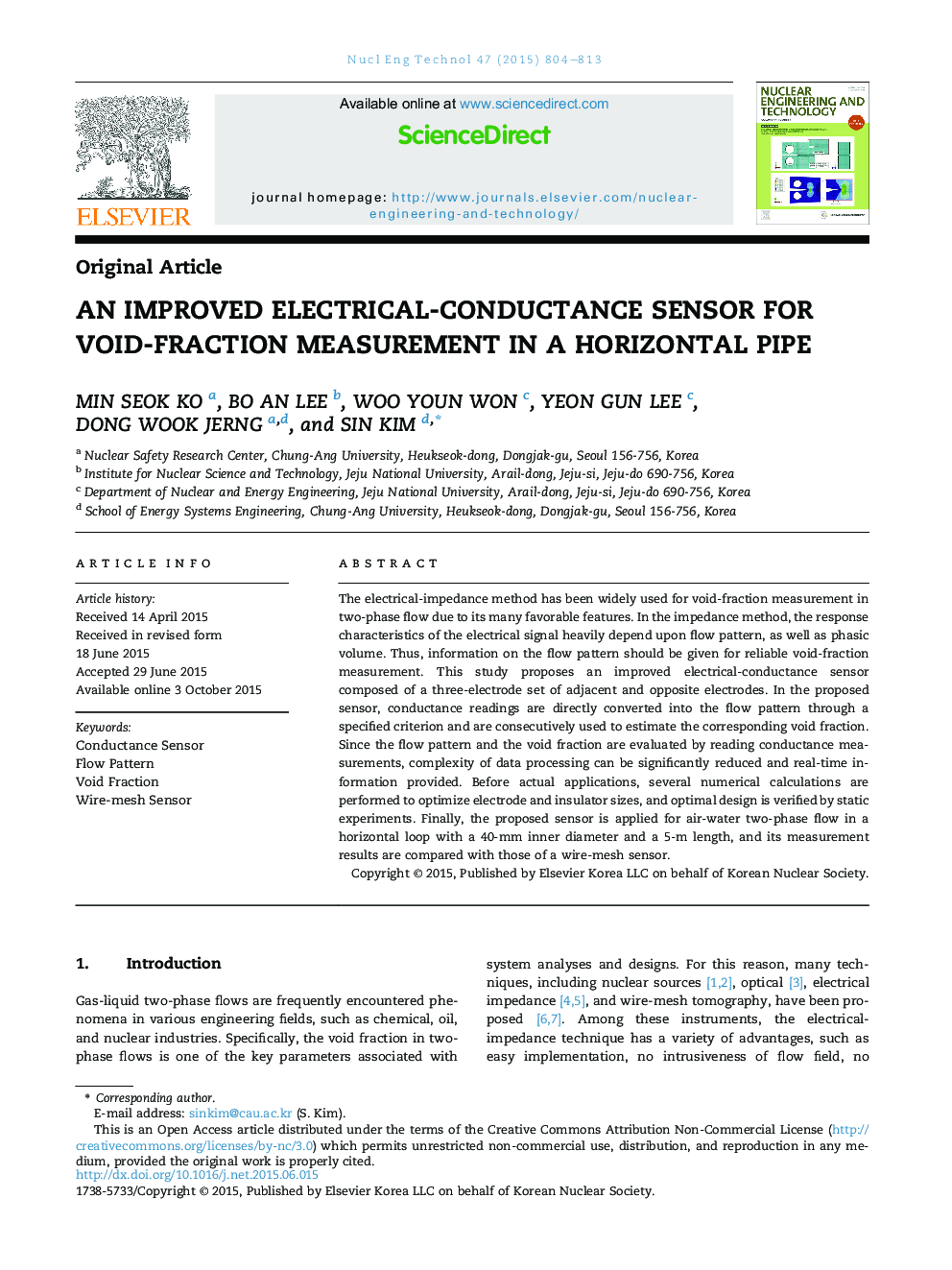| Article ID | Journal | Published Year | Pages | File Type |
|---|---|---|---|---|
| 1740060 | Nuclear Engineering and Technology | 2015 | 10 Pages |
The electrical-impedance method has been widely used for void-fraction measurement in two-phase flow due to its many favorable features. In the impedance method, the response characteristics of the electrical signal heavily depend upon flow pattern, as well as phasic volume. Thus, information on the flow pattern should be given for reliable void-fraction measurement. This study proposes an improved electrical-conductance sensor composed of a three-electrode set of adjacent and opposite electrodes. In the proposed sensor, conductance readings are directly converted into the flow pattern through a specified criterion and are consecutively used to estimate the corresponding void fraction. Since the flow pattern and the void fraction are evaluated by reading conductance measurements, complexity of data processing can be significantly reduced and real-time information provided. Before actual applications, several numerical calculations are performed to optimize electrode and insulator sizes, and optimal design is verified by static experiments. Finally, the proposed sensor is applied for air-water two-phase flow in a horizontal loop with a 40-mm inner diameter and a 5-m length, and its measurement results are compared with those of a wire-mesh sensor.
